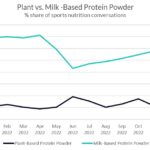Amazon.com did it again. Prime Day, which took place for 48 hours on July 11 and 12, generated record sales and a 6 percent year-over-year increase, wooing customers with steep discounts. With inflation hitting customers this year, a lot of retailers are looking to Prime Day to help guide their own discounting approach for the holiday season. However, discounts aren’t the only things that will drive purchases. Retailers can attract customers in a number of ways if they’re tuned into this year’s unique buyer behaviors.
In addition to going through the standard “holiday readiness checklist,” retailers should also dedicate time to updating their approach to address changes in the market, in consumer behavior, and take advantage of new tactics that have the potential to drive better performance. Here are some effective strategies for retailers to add to their holiday marketing plans.
Find Our More About Loyalists
Amazon reached out early to members of its loyalty program to give them access to “invite-only deals.” Loyalty members were able to earmark the products they were thinking of purchasing and request specific invites to those sales. Not only does this help Amazon capture future sales, it helps it learn more about the preferences of its loyalty members.
As expected, other major retailers offered competing sale events during Prime Day, providing substantial discounts alongside introducing fresh offers and promoting brand value to ignite new customer relationships and encourage the adoption of new products and services. For example, Walmart pushed Walmart+, offering a 50 percent discount on annual membership signups. This program gives Walmart info about shoppers that can be used for targeted offers year-round.
Leading up to the holiday, retailers can use similar tactics. To learn more about loyalty or engaged buyer preferences, retailers can send previews and invitations to product- or category-specific sales to not only prime customers to buy (pun intended) but also to feed into additional marketing around that specific product. Retailers should take the opportunity to engage in a conversation with their audience and encourage them to select products of interest. For example, if an engaged buyer selects deals for a certain style of jeans, the apparel retailer can create a bundled offer for matching attire and accessories. Furthermore, offering a discount to get more subscribers to a loyalty program can pay off come holiday time when personalized offers can drive higher conversions.
Update Marketing Strategies Based on Shifting Consumer Behavior
This year, Amazon leaned into influencers to help drive sales, noting that more consumers than ever use social media platforms like TikTok and Instagram to decide what to buy. While most retailers aren’t going to tap into a vast network of famous influencers the way Amazon does, there’s still an important takeaway. Marketers should review their approach to ensure that it aligns with their audience’s shifting preferences across channels, platforms, messaging and timing.
Retailers can start with the basics and have a checklist for testing each element of their marketing program to see what needs to be updated or swapped out. A few examples: since the majority of consumers prefer scanning emails on mobile, take the necessary steps to optimize for the device and refresh for the holiday season. Additionally, with many consumers spending the bulk of their mobile time on social media apps, retailers should test incorporating similar user interface (UI) features into their email channel. By doing so, they can measure the level of engagement and its impact. With the hybrid work model becoming more of the norm, old email schedules might no longer apply. People work late, check email on weekends, and exhibit a range of shifting behaviors in remote work settings.
Lean Into Discounts … Carefully
Of course, the name of the game is discounts for a lot of retailers, especially in a tough economy. However, blasting out batch emails with steep discounts isn’t the best approach. Depending on how the question is asked, surveys find that about 75 percent to 80 percent of consumers are driven by discounts. That means about 20 percent to 25 percent of consumers are not. Sending them discount offers is like throwing money down the drain. Finding out which consumers don’t prioritize deals is a quick way to drive up margins this holiday season.
What’s more, not every consumer needs the super-steep discount in order to buy. The best way to know is to test and segment audiences starting now so that audiences can be tailored to different purchase behavior over the holidays.
And for consumers who do want that low-low price, think about how to get more value from the transaction, either by bundling items, getting them into a loyalty program, or simply asking for a bit more information that can help with future personalization.
Remember to Be Unique
Following Amazon can certainly provide a lot of great ways to drive holiday sales, but retailers can’t forget to also lean into what makes them special. Target found its unique voice during Prime Day by sharing discounts with “no membership fee required.” By zigging when everyone else zagged, Target grabbed some new customers and doubled down on its differentiated business model. Discounts aren’t the only way for retailers to get customers this holiday season.
As we prepare for a holiday season that’s expected to kick off earlier than usual, it will pay off if retailers take these initial steps of optimization, testing, and setting a well-defined plan in motion.
David Kepets is strategy director at Alchemy Worx, a global email marketing agency.
View Original Article
















